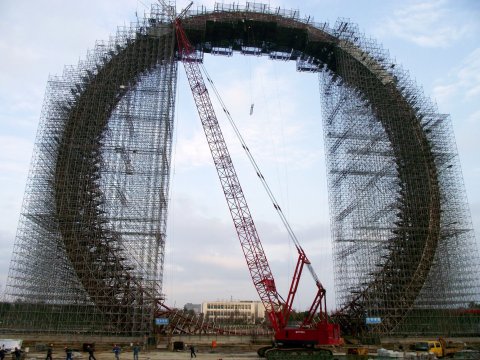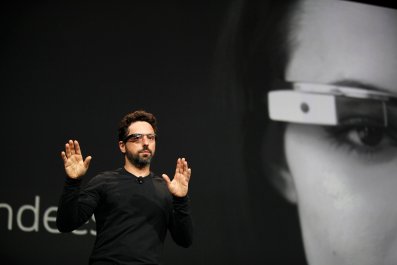Who knew amusement parks were such a deadly serious business? There is a fun-filled arms race raging around the world as wily speculators try to build the world's tallest Ferris wheel, and rake in a few hundred million tourist dollars as well. This month, the final piece was hoisted into place for the High Roller, a 55-story wheel that's the star attraction in a $550 million complex on the Las Vegas Strip from Caesars Entertainment Corp. When it opens this winter, the High Roller will eclipse the 541-foot Singapore Flyer as the tallest wheel in the world.
Vegas will hold the crown for barely two years before the New York Wheel is slated to open in May 2016, rising 625 feet above Staten Island and offering panoramic views of Lady Liberty and the Manhattan skyline. Richard Marin, CEO of New York Wheel LLC, expects the attraction to lure 4.5 million people across New York Harbor annually and make the Cinderella borough one of the Big Apple's top visitor destinations. "The wheel will extend the tourism boundaries of New York City to its natural and magnificent limits," Marin says. "It will become one of New York City's – and the world's – great landmark attractions, alongside the Statue of Liberty and the Empire State Building."
But New York is in a neck-and-neck race with the 689-foot Dubai Eye, due to start spinning in 2015 alongside the emirate's other superlatives: the world's tallest building (Burj Khalifa), highest hotel (JW Marriott Marquis) and largest man-made island (Palm Jumeirah).
Not far behind are the world's largest spoke-free wheel, in Changzhou, China; the Nippon Moon in Japan, whose design team promises that it will be almost twice the scale of the 433-foot London Eye; and a second Vegas wheel, the SkyVue. Dozens more are due across the globe in the next five years.

The current craze started in 2000 with the opening of the London Eye, the most popular paid tourist attraction in the United Kingdom, with climate-controlled capsules replacing wobbling baskets. "The London Eye proved you could build one of these wheels as a stand-alone attraction and it could work and it could be profitable," says Nick Weisenberger, author of Observation Wheels: Guide to the World's Largest Ferris Wheels. "The Eye has done for London what the Eiffel Tower did for Paris," wrote Richard Rogers, one of the architects of Paris's Centre Pompidou.
Weisenberger says the next generation of wheels will boast transparent touch screens that describe the view below, and even Google Glass-type windows. "I think we could see some noncircular design shapes, like a square, triangle or pentagon, where passenger capsules would move around a stationary track as opposed to a wheel turning," he says. "We could see observation towers with roller coasters attached – a concept called the Polercoaster – or entire amusement parks built in a vertical, skyscraper configuration occupying a very small footprint."
Not bad for a revolutionary idea dreamed up by a humble bridge-builder from Pennsylvania, George Washington Gale Ferris Jr., who went loopy at the turn of the 19th century. His "pleasure wheel," the world's first, started turning at the 1893 Chicago World's Fair. It was 264 feet tall and carried 2,160 people. At 50 cents per ride (the same as the entrance fee for the fair), it was so popular that it saved the World's Fair from financial ruin.
And there's clearly still plenty of gold in them thar wheels.























